A Conversation with Phil Toledano
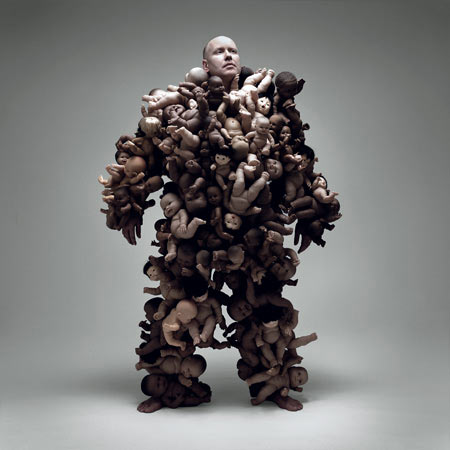
Phil Toledano is one of those photographers where it’s impossible to predict what he’ll come up with next. The first to portray video gamers, he has since covered a large variety of topics, such as his most recent America - The Gift Shop (which is really an art installation), the very personal and moving Days With My Father, or the just released Phone Sex. I was curious to learn more about how Phil does all that, so I decided to simply ask.
Jörg Colberg: In your biography, you write “I believe that everything should start with an idea, whether it be a single image, or a series.” I’m wondering how this works in practice. You probably have tons of ideas for possible projects - do you write them down in a little book, to come back to them? Or do you ignore everything while working on a project? Do you prioritize ideas for future use?
Phil Toledano: Actually, my idea process is a bit of a mystery to me. I DO have a lot of ideas, but I tend to not write them down. Instead, I’ll think about specific ideas for a few months, and then forget about them. Then, six months, or a year later, I’ll find myself spontaneously working on one of them. There’s no discernible trigger. It’s as though two people who live in my brain talk over the ideas, and then they let me know when it’s time to start.
I don’t prioritize. The process is quite Darwinian, in fact. The ones that survive the dialogue period of months or years, are the ones I work on.
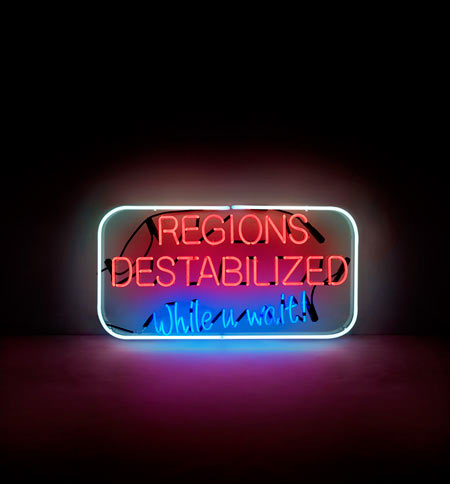
JC: And more concretely, when you approach an idea, how do you develop the photography? Some ideas might be more easily accessible than others. For example, for “Bankrupt” you “simply” shot inside abandoned office buildings. But for “Hope & Fear” or “America - The Gift Shop” the original idea seems to have required a lot of thinking and conceptualizing. How do you typically go about this?
PT: I find that for me, ideas drive the execution. The idea and the way it will be created are both born at once. “Bankrupt”, or “Phonesex” were quite straightforward documentary ideas, whereas “Gift Shop”, “Hope & Fear” or “Video Gamers” required a different kind of interpretation.
For an idea like “Gift Shop”, as usual, the idea came to me in an inexplicable way, and then I sat down and wrote down all the ideas that came pouring out of my head. Some of the ideas were perfect immediately, and some needed to be fiddled with for a few weeks or months, before they clicked. It’s like having a piece of food stuck between your teeth… you keep worrying it with your tongue, and then there’s this immense sense of satisfaction when you dislodge it. It’s a bit of an odd metaphor, but quite accurate, I think. I also like the idea of not being bound by photography - the potential of operating in any medium is very liberating.
JC: Given what you’ve just described what advice would you give younger photographers who still are trying to figure out how to work on/approach projects?
PT: To paraphrase Glengarry Glenross, ALWAYS BE WORKING. Don’t worry about how/why, the most important thing is kinetic energy. Always be moving forward. Just start the project, and the momentum will carry you forward.
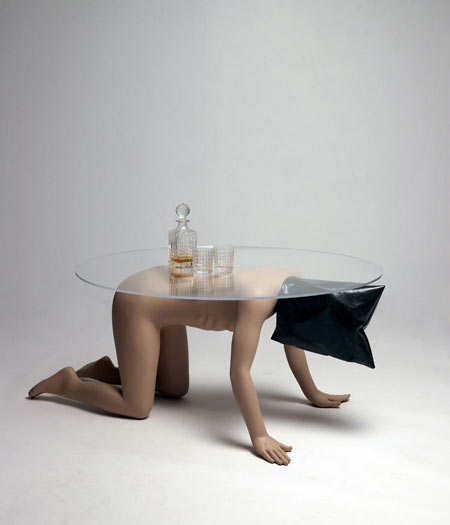
JC: “America - The Gift Shop” is more than “just” a photography project, because all those objects in the photographs really exist. You had little bobbleheads made, as well as “choc and awe” chocolate, an inflatable prison cell etc. - all in China. How did you find the companies that make such things? How did you tell them what you wanted? I could imagine that must have been fairly complicated.
PT: “Gift Shop” was conceived to be an actual show. Actually, I wanted to have it in a purely retail environment, with muzak and everything (as it turns out, it’s going to be shown at the Center for Photography at Woodstock in late January 2009, in exactly the way it was conceived!) I made photos of the pieces just so I could put it all up on the web, but I was surprised by how many people didn’t think I’d actually MADE the stuff.
Only the inflatable Guantanamo Bay prison cell and the Abu Ghraib bobblehead were made in China. The rest was made in America. To find Chinese manufacturers, I Googled ‘bouncy castle manufacturers, China’ or ‘bobblehead manufacturers, China’ and then emailed a few companies. It was really simple. And then, for the bobblehead, for instance, I sent the manufacturer the actual photo from Abu Ghraib, and they’d email me photos of progress, with me commenting along the way. The whole project, from start to finish, probably took me about six to eight months, all told. That’s the amazing thing about the web - ANYTHING is possible
now.
PT: And none of this felt a bit weird to you - emailing people you’ve never met about how to turn those photos into a bobblehead? I sometimes feel as if with the web our sense of “wonder” (corny way to say this, I know, but it’s fitting anyway) is somehow disappearing, since everything can be had so easily.
PT: I wouldn’t say everything can be had easily - good ideas are just as hard to find as they used to be… What matters (I think) is not the process, but the end result… Otherwise, Warhol’s soap boxes etc, would be of no interest at all, if we were to judge art by how easy it is to create…
Since the process is (almost) always invisible in art, the sense of wonder, for me at least, remains - an extraordinary idea, a beautiful thought, a skilled hand… All these things are as amazing as they were before the web.
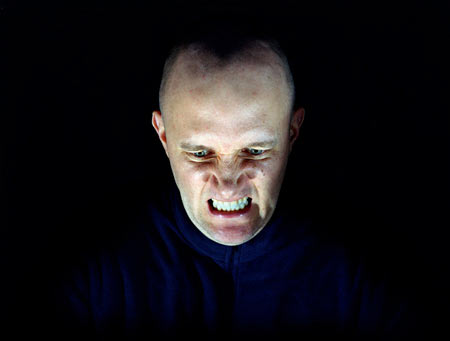
JC: Taken together, with the exception of “Days with my father”, your projects cover many aspects of this American world. Is that something that you see as your role as an artist, to portray this world, maybe in a bit exaggerated manner, for people to see?
PT: I do see my work as socio-political in nature, although I’m not sure I agree with the ‘exaggerated manner’. It’s true, that my work tends to reflect the society I live in, but I feel quite a lot of it isn’t necessarily a reflection of American society. “Phonesex”, “Bankrupt”, “Videogamers”, and the two new projects I’m working on were taken here, but could be (almost) anywhere. Ever since I was a child, I remember wanting to create things that might move people, or show them something new. I’ve always wanted to SAY something with the things I create. I’m just lucky that occasionally people seem to be interested.
JC: You have an international background and were born in England. I’m wondering how not being born in the States, but having lived here for over a decade has influenced your work?
PT: I’m sure it’s influenced my work, although how, I can’t really say. I’ve been thinking about the idea of moving back to Europe, and I wonder if I would be similarly inspired.
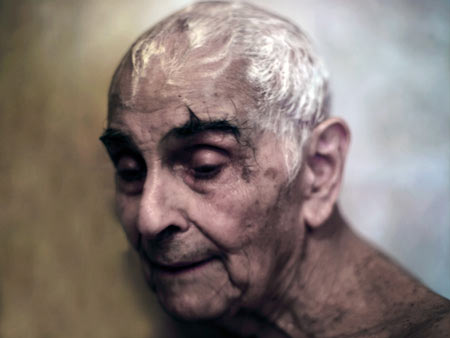
JC: “Days with my father” is an intimate portrait of your father who is suffering from losing his short-term memory and of your relationship with him. How did you realize this was something you wanted to work on?
PT: I know this will be provoke a frenzy of eye rolling, but art or the act of creation is entirely instinctive for me. I tend not to consciously think about things too much, at least in the initial conception stage. I just start, and then, at some point, I stop.
When my mum died, I went for a long time without taking photos of my father. After a while, I felt as though there were so many things I wanted to remember, that I started taking shooting and writing about what I was seeing, and feeling. I like words and photos together.
I must say, I’ve been quite overwhelmed with the response to this work. It’s so personal, I never imagined anyone else would really be interested. Now I realize in retrospect, that it’s a very universal, almost generic experience. But I’m very grateful for all the people who’ve written to me.
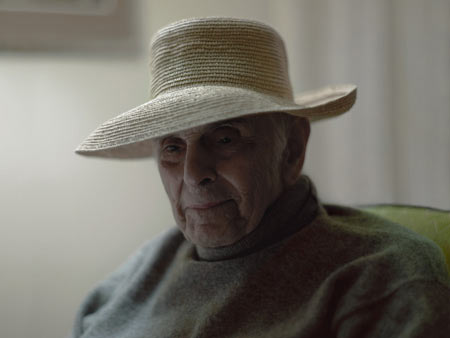
JC: There’s one question I’ve had, and I was never sure how to ask this. But let me try it anyway: To what extent does your dad realize what you are doing with the project? And how does his realizing or not realizing influence how you approach(ed) the work?
PT: When I’m taking photos, he’s complicit in what I’m trying to do. He’s aware of the camera, and will pose for me. I think he likes the abstract idea of our project together. But every time I show him the photos, he hates them. He tells me they’re ‘terrible’. I know that when he says that, it’s both his vanity, and his dementia speaking. Although, I also think he just doesn’t think they’re good ‘portraits’ as he imagines a good portrait. They’re too dark, to blurry, etc…
Of course, every time I come over with the camera, I have to explain anew what I’m doing. So to him, it’s almost as though each time is the beginning of a new photo project. I did tell him that I’d posted the projects on the web (another nightmare of explanation) and I mentioned that in the first few months, over 500,000 people had been to the site. He looked at me, and I thought he was going to say something really touching, but instead, he said “you’re going to be famous!”
It was very funny at the time…
 By
By